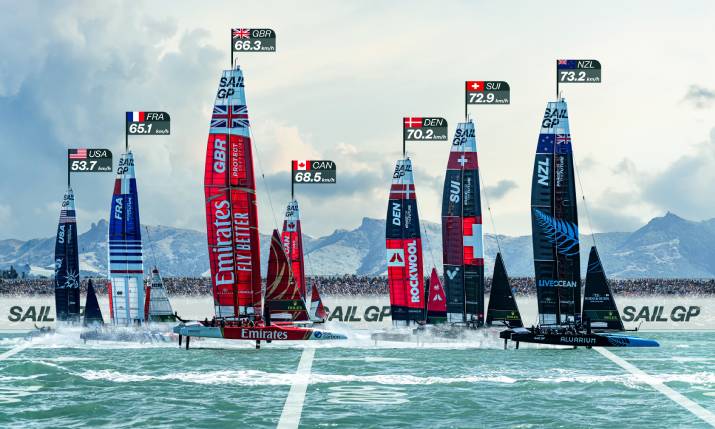The application of XR into the attraction and amusement landscape is covered by industry specialist Kevin Williams. His latest Virtual Arena column investigates developments as the LBE sector moves toward applying streaming VR technology to drive a high-fidelity experience.
Image credit: Zero Latency
While the establishment of location-based entertainment (LBE) takes hold across the international market. The application of the technology deployed within these facilities is in constant flux. Evolving with the latest developments in the immersive entertainment industry. It is this innovation that makes the market a barometer of the latest trends that could play a part in defining the consumer application of this tech.
One of the biggest trends sweeping LBE has been the deployment of free-roaming experiences, as charted in recent coverage in this column. But technological advances have been made that allow the free-roaming VR experience to be significantly improved and made assessable to a wider audience with a much-reduced cost-benefit (removing cumbersome PC backpacks). A higher fidelity of VR experience moves beyond that achieved using just the mobile processor of current standalone headsets. The developer of these low-latency 5G network applications have been actively reaching out to the LBE community for adoption.
What we mean by streaming VR, is pushing high-fidelity VR directly into the latest headsets. Most of these implementations use a 5G connection between the host PC and a VR headset. This streaming infrastructure also supports updated positional tracking for multiple-player deployment. All this is supported by the latest Qualcomm XR2 standalone headsets, such as the HTC Focus 3, along with the latest systems from Varjo, Pico, and Pimax, focused on commercial application, (as is promised with the Meta Project Cambria, still to be released). This is technology that has been refined for enterprise (SeriousVR) applications such as for training, CAD design, and now commercial entertainment.
The deployment of this approach in entertainment has been gathering momentum. Recently AT&T teamed with Warner Bros., Ericsson, Qualcomm, Dreamscape Immersive, Nvidia and Wevr, to create an ambitious proof-of-concept immersive location-based experience. This was based on the already installed Harry Potter: Chaos at Hogwarts free-roaming VR experience opened at the Harry Potter Wizarding World New York venue. Now using AT&T’s 5G streaming technology, and NVIDIA’s CloudXR, Dreamscape were able to create a prototype version of the experience, at their test facility that removed the need for the cumbersome PC backpacks and streamlined the experience. This development was a proof-of-concept towards being able to offer their high-fidelity VR attraction based on this technology.
The ability for manufacturers in the LBE sector to upgrade towards the latest technology is a benefit of owning the space. Where consumer VR application needs to establish customer penetration, LBE brings the technology to the player, and so upgrades accordingly. This is best illustrated by Zero Latency, a company that has constantly been on an iterative path with its free-roaming attraction. The company announced its move towards ditching PC backpacks and moving to streamed VR but keeping the high-fidelity VR experience. The company deploying a new system streaming over a local Wi-Fi 6E network to players using HTC Focus 3 headsets. This technology has to ensure the high-end performance needed, as seen with their latest free-roam VR adventure, from Ubisoft, set in the world of Far Cry 3.
Image credit: Zero Latency
The growth in VR entertainment facility deployment has seen the providers of the content also adopting a streaming methodology. SynthesisVR, a location-based virtual reality content distribution and facility management platform, recently partnered with QuarkXR, a trusted solution provider focused on VR streaming. Towards offering all LBE VR arcade operators a simple, and automated VR streaming solution, previously not available. A solution for wireless VR game streaming was created specifically for the industry through this exclusive co-developed solution, connecting the host PC and Android VR Headset. This will allow VR arcade operators to benefit from the opportunities of streamed VR applications, and the cost-saving this will bring.
We are seeing many established LBE developers migrate to a streaming VR approach, such as with the announcement of the new ‘Hologate-X’ platform. Developed by market leader Hologate, who has established their tethered VR arena platform across the market. The company staying on the cutting edge of new development have created their own streamed VR platform. To be launched at their flagship Hologate-World location in Germany, the ‘Hologate-X’ attraction running the inhouse developed game ‘SIGVRIED: Escape from Valhalla’, offers streamed low-latency 5G network VR direct to headsets, allowing the four players to simultaneously explore the virtual world unencumbered. For the application, Hologate has added haptic vests, along with feedback from the weapons the players carry. All supported by the 4D effects of the arena space they play within.
SIGVRIED: Escape from Valhalla. Image credit: HologateIt is this ability to offer such a high-fidelity VR experience, supported by 4D physical effects that separate what is achievable with commercial immersive experiences from the casual consumer experience. Thus showcasing how VR streaming is able to deliver a new level of VR experience to users. We look forward to reporting on further developments in streaming VR soon.


